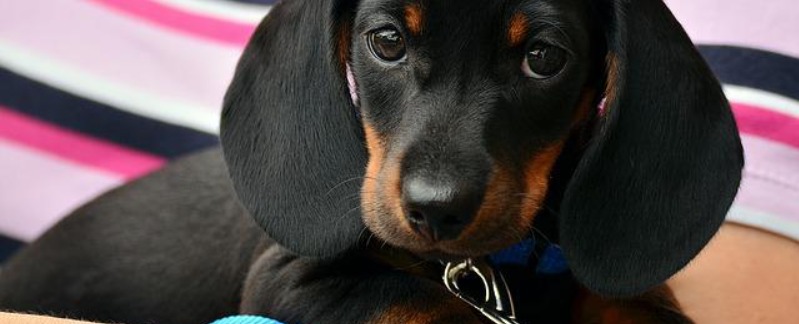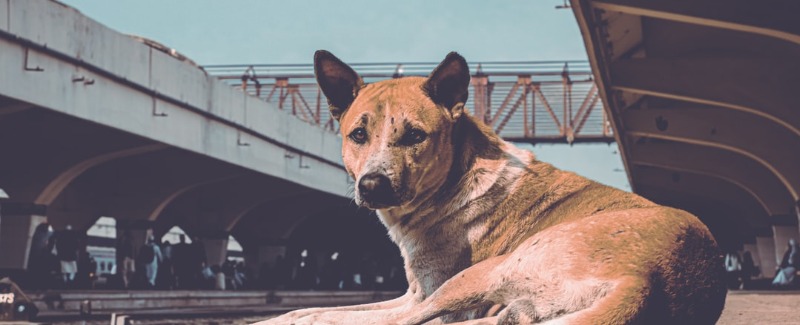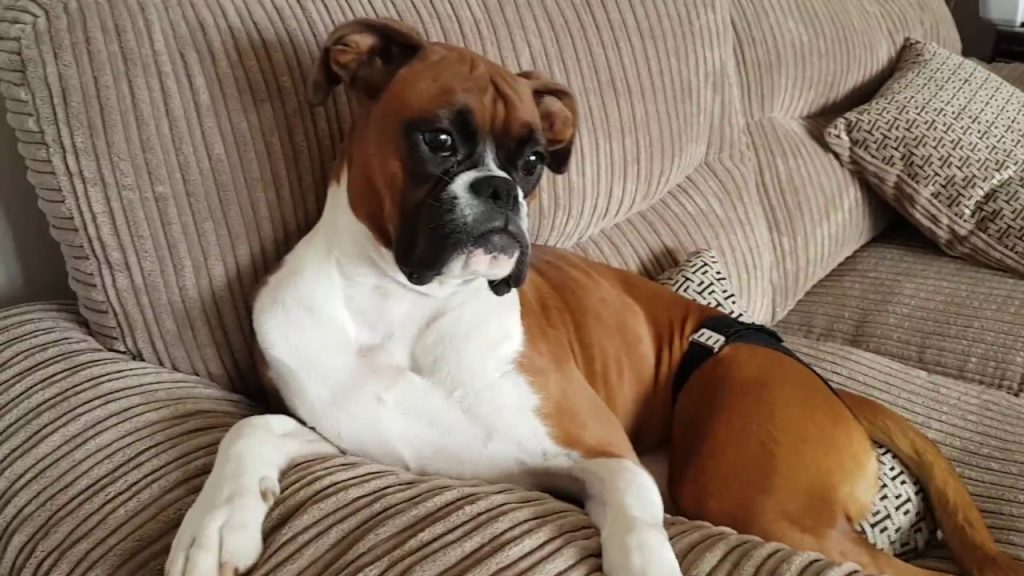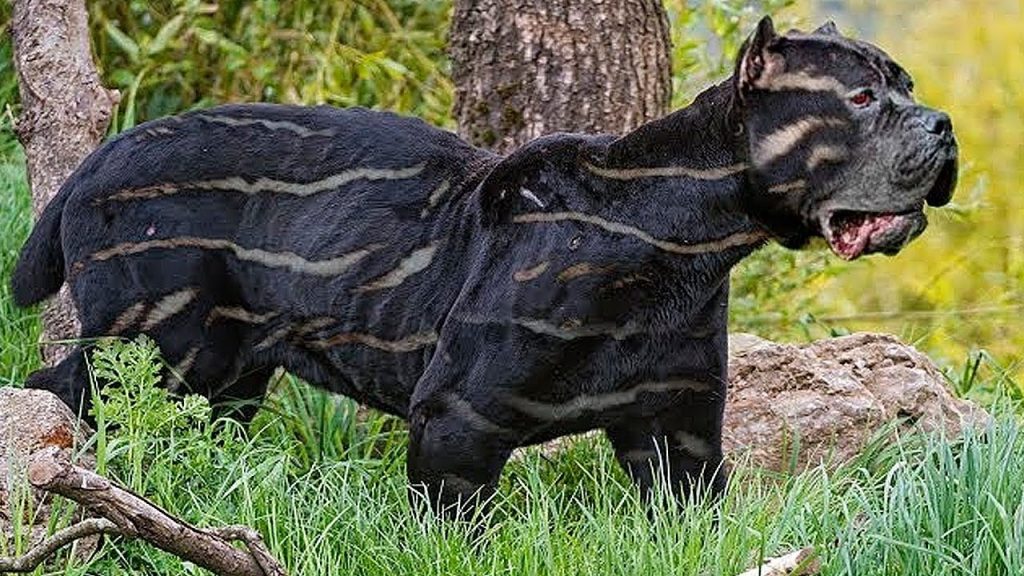14 Dog Breeds That Don’t Shed for Owners with Allergies
Contents
Many would be dog owners are hypersensitive to allergens from dogs that can trigger allergic reactions. Luckily, for these allergy sufferers there are a number of hypoallergenic, non shedding dogs breeds that are less likely to trigger an allergic reaction.
The most important thing to remember when you have allergies to dogs is that just because it doesn’t shed, doesn’t mean you aren’t allergic. The dogs still produce skin cells and saliva which is where a lot of people experience allergy problems. Although, the lack of coat does make the allergies more tolerable for most people. There are many breeds of hairless dogs as well as dogs that don’t shed. Here is a list of the 14 most popular dog breeds for people who don’t like dogs that shed.
1. Yorkshire Terrier
Yorkshire Terriers are very small dogs with very big personalities. They have a long luxurious coat, that sheds very little but does require regular brushing and grooming. Yorkies are very outgoing and highly sociable. They are always on alert and can be relied upon to bark even at the smallest sign of danger or the presence of intruders.
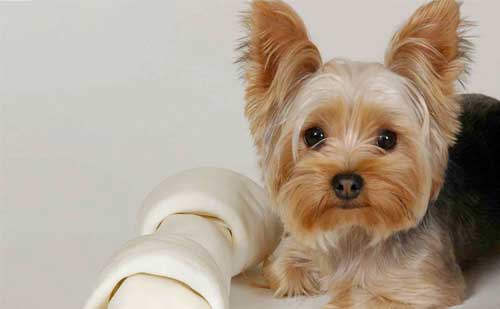
A Yorkshire Terrier, commonly known as a Yorkie, is a small breed of dog that is hypoallergenic because they are thought to have hair rather than fur. Because of this, their hair will, generally, only come off when it is brushed or broken rather than actual shedding. The problem that many people with allergies face with this breed, and any other breed of dog, is their saliva. When a person is allergic to dogs, it isn’t just the fur that they’re allergic to; the saliva and dandruff that comes from a dog also triggers allergic reactions as well but the chance of a reaction is significantly reduced when in contact with a breed that doesn’t shed.
2. Dachshund
Dachshunds with their big droopy ears, long bodies, short legs and warm intelligent eyes, are definitely endearing to anyone. They come in three different coat types—short or smooth haired, wire haired and long haired. The long-haired Dachshund may shed a little and need daily grooming, however the other varieties don’t shed as much. They love to be around people, and can make good watchdogs because they are naturally suspicious of strangers.
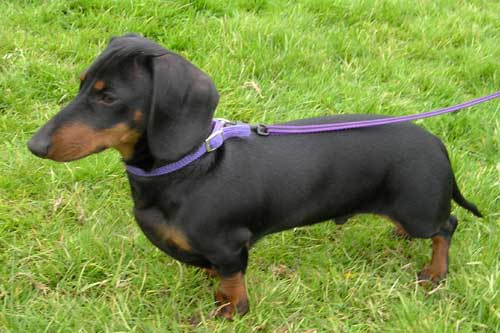
3. Poodle
The Poodle is the ideal dog for allergy sufferers because they hardly ever shed. They possess a lustrous dense coat, curly or corded and need to be groomed regularly to keep their coats free from tangles. Their affectionate and loving nature allows for a strong bond with all family members. They make excellent watchdogs and are constantly alert and quick to bark.
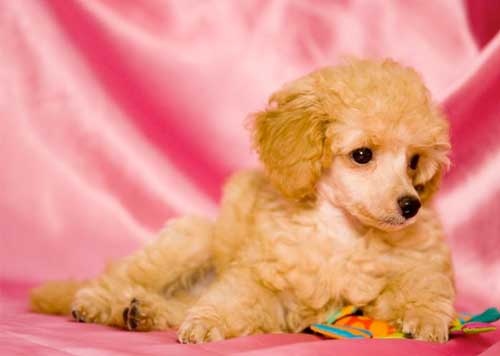
Although considered to be a French dog, this breed actually originated from Germany. They are a very intelligent and skillful breed that is often shown for agility, obedience, herding, and tracking. They can develop many health problems such as Addison’s disease, gastric dilatation volvulus, common illnesses, and difficulty reproducing. There are also a few variations of Poodles including the Standard Poodle, Miniature Poodle, Toy Poodle, and Medium Poodle. They have a single coat of thick curly hair that doesn’t shed because the hair that comes off usually gets tangled amongst the other curly hair on its body. If not cared for and groomed properly, this can lead to the hair matting. It is recommended that this breed be groomed every six to eight weeks to ensure that they will only shed minimally and that their coat will be maintained properly.
4. Shih Tzu
Even though the Shih Tzu has a long silky coat they are considered non shedders. However because of their long hair, they need to be regularly groomed with daily brushing to avoid tangles. Owners my opt to clip their coats close to the body if they don’t have the time and patience to do daily brushing. These high energy little dogs can be a good watch dog but without a pack leader, they can develop ‘small dog syndrome’ which can make them behave as if they are the boss of the household.
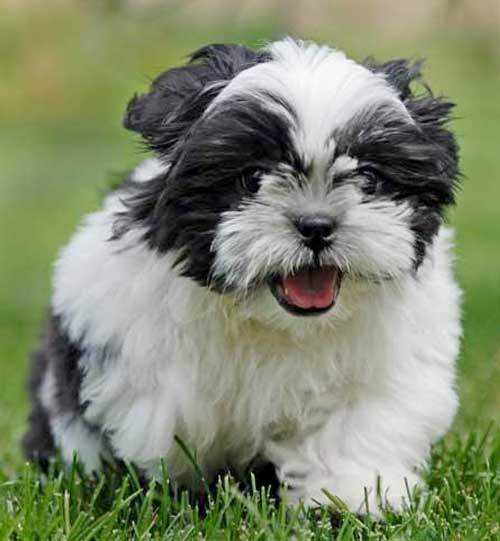
This is another toy breed that is known for it’s long, silky, luxurious coat. Because their noses are pushed in, they are known to have breathing problems which can be detrimental. They are also known to develop health issues such as hypothyroidism and intervertebral disk disease. Unless their hair is pulled back or shaved, you won’t be able to see their large dark eyes. They also have drop ears that are covered in the same long hair found on their bodies and they have a tail that curls over their back. They are a bit larger than they are tall and they have a very loyal, loving, and extroverted temperament. They also require proper training and socialization from a young age to ensure proper behavior. Improper training and socialization can result in problems such as nipping or biting and neediness.
5. Miniature Schnauzer
The Schnauzers are extremely affectionate which make them an excellent family dog. Their wiry overcoat and soft undercoat requires the need for regular grooming but they hardly ever shed making them excellent for those prone to allergies. A lot of Miniature Schnauzer owners prefer to have the hair clipped short except for its beard, legs, eyebrows, and mustache.
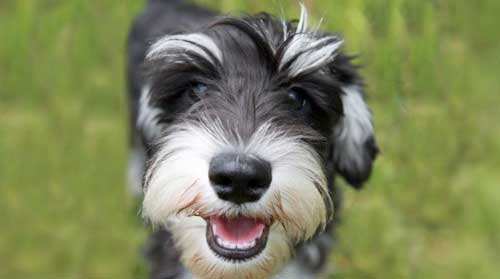
6. Boston Terrier
The Boston Terrier has a smooth short coat which can be easily groomed and shedding is relatively insignificant. This breed loves people and because they are fairly quiet they are suited well to apartment living. They are known to be rambunctious on occasion.
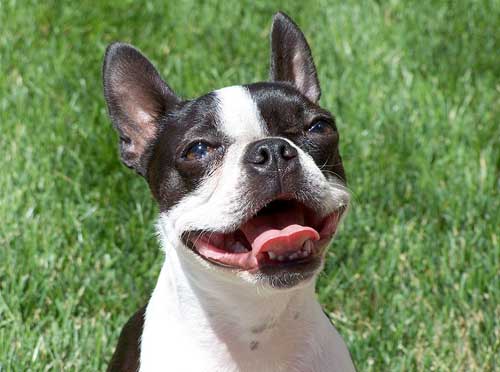
7. Maltese
The Maltese is a toy breed that has very long silky hair which does not shed. This breed requires regular brushing which can prove to be expensive and time consuming. Known to be highly intelligent, a Maltese can also have a stubborn streak. These dogs can be highly excitable and fearless.
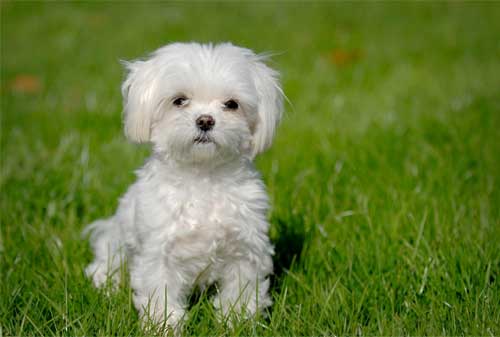
This toy breed is hugely popular, it originates from the Central Mediterranean area with its name being derived from the country Malta. They are typically no more than eight pounds and under a foot in height. A Maltese will usually live for twelve to fifteen years giving it an ideal lifespan for owners who want as much time with their pet as possible. They have a rounded skull and a button nose with brown eyes and their drop ears are one of their more defining features. If this breed doesn’t get outside very much, their originally black nose may turn to pink or light brown, often referred to as a “winter nose” which will regain its black color when they get more sun exposure. They don’t have an undercoat so they can sometimes be more sensitive to the cold and their coat is long and silky meaning they will require a lot of maintenance despite their non-shedding characteristic.
9. West Highland Terrier
The Westie’s coat has two layers—a straight outer coat which is smooth, hard and weather resistant and an inner coat that is short and soft. Their shedding is negligible. Their coat needs daily brushing to keep it free from lose hairs and to prevent matting. They are energetic little dogs with instinctive hunting skills.
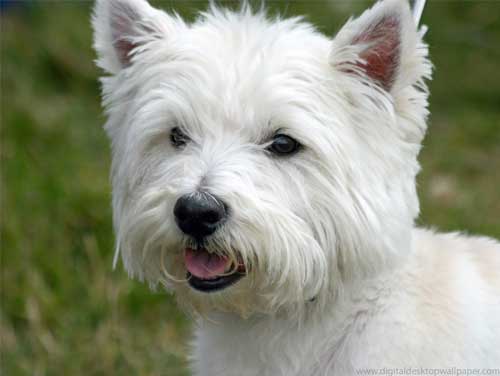
Affectionately known as the Westy, this Scottish breed is known for its distinctive white coat, dark and almond-shaped eyes, and its tiny, pointed and upright ears. This breed will generally weigh around twenty pounds and stay under a foot tall with their body being shorter than their height, proportionately. This breed’s soft, yet thick undercoat and rough outer coat can become about two inches long with their fur filling out their face creating a rounded look. Into adulthood, their outer coat is generally cut off to reveal a soft and more appealing undercoat. Although this breed does shed a little, as long as you maintain their coat by brushing weekly you will remove the small amount of dead fur as well as help to keep their coat clean and prevent any matting. By helping to keep their coat clean, this means that they won’t be trying to clean it themselves by licking and leaving saliva residue on their coat which is what a lot of people with allergies have trouble with.
10. Bichon Frise
The Bichon Frise has a thick wavy coat but no distinct undercoat. It does not shed but it’s fluffy coat needs to be brushed daily and some may opt for regular professional grooming. Because it can get costly and time consuming some owners may choose to clip the Bichon Frise’s hair close to its body for less cost and maintenance. These dogs are friendly, affectionate and and live well with other pets in the household.
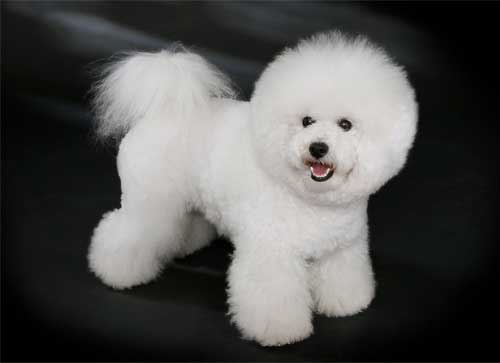
This toy and non-sporting breed is known for the fact that it doesn’t shed. Although, it’s only natural that, over time, they will have loose hair just like a human would so you will need to brush your Bichon frequently but not an overwhelming amount (grooming should be done every four to eight weeks, typically). Their curly coat also prevents loose hair and dandruff from escaping into your home, much like that of a poodle, because it gets caught in the surrounding curls (yes, dogs get dandruff too; it’s normal). This breed is recommended for people with allergies because they were bred to be hypoallergenic in nature. It’s important to remember that allergies differ for each person so you may want to spend time around a Bichon Frise, or any dog, before purchasing one so that you know how your immune system will react around them.
11. Labradoodle
Labradoodle is a cross-breed comes from the mating of a Labrador Retriever and a Toy Poodle. It wasn’t always as popular as it is today, but it was originally bred to create a hypoallergenic service dog for those who needed a service animal but had allergies to dogs. It’s important to note that not all Labradoodles are hypoallergenic so you should spend some time with the dog before committing to a purchase. The reason that the hypoallergenic quality of the breed is not guaranteed is because it’s a hybrid breed meaning that the puppies can’t be predicted to have one trait or the other. This breed is very close to the Goldendoodle.
12. Havanese
The Havanese is another type of Bichon dog, often called the Havana Silk Dog. It’s thought that the Havanese descends from a mix of the Bichon breed and the Poodle creating a small, sturdy dog with a tail that curls over the back. They have a very long and silky coat that comes in a variety of colors and is double-coated. Their coat can be slightly wavy and is usually not rough in texture or extremely thick, despite its abundance. In some cases, the dog may not have an undercoat at all. What’s particularly interesting and admired in this breed is that even though they have a long and appealing coat, they are considered hypoallergenic because they don’t shed. Although, it is important to maintain a consistent grooming routine because the small amount of hair that does come off the dog can become tangled amongst the other hair on its body, especially if you decided to cord it’s hair (similar to a human getting dread locks), which will create an unappealing matting problem.
13. Chinese Crested
A Chinese Crested is like a glass of Scotch, some people love it and some people can’t stand it. It’s important to note that, most often, this breed is hairless although it does come in a Powder Puff variation where they have a long, double coat (this can even occur in the same litter). This is a small breed of dog that usually weighs no more than fifteen pounds. The hairless variation of this breed can have varying amounts of hair on its body and is even joked to have a beard in some cases. The only difference in appearance between a hairless with a lot of hair and a Powder Puff is that a Powder Puff will have a double coat while a hairless will only have a single coat. This becomes important in terms of allergies because a Powder Puff is known to shed quite a bit.
14. Cairn Terrier
This hypoallergenic breed is one of the oldest breeds of Terrier around; it originated in Scotland and is a working dog by heritage. It gets its name from the term cairns (man-made piles or stacks of stones) because it was used to chase prey into, through, and around the cairns in the hills of Scotland. Like many hypoallergenic breeds, this breed doesn’t shed. Although, like all animals with hair, it requires some grooming to ensure that the coat won’t become matted with dead hair. It is recommended that you hand-stripe this breed (hand-stripping is when you pull the dead hair out of the dog’s skin by the roots). Hand-stripping can seem like it will be painful for the dog, but it’s only painful if it’s done incorrectly. It’s recommended and important to do this because it allows new hair to grow due to the fact that the breed doesn’t shed naturally.

